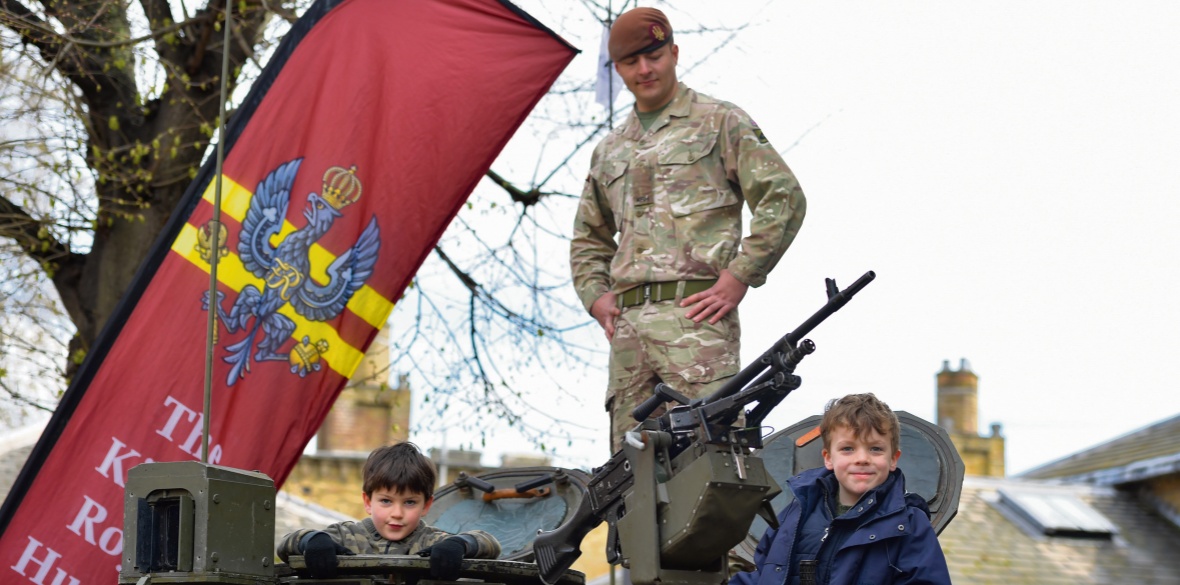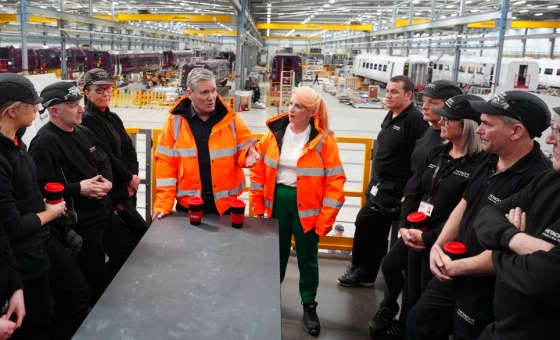This is the last article you can read this month
You can read more article this month
You can read more articles this month
Sorry your limit is up for this month
Reset on:
Please help support the Morning Star by subscribing here
FROM protests against BP’s sponsorship of the British Museum, to anti-Shell demonstrations at the National Gallery, the debate over who funds our cultural institutions continues to rage. Now another London landmark is coming in for criticism, this time over its links to a Gulf dictatorship.
The National Army Museum (NAM), next door to the Chelsea pensioners hospital, is a public body that describes itself as a “leading authority on the British Army and its impact on society past and present.” But when a refugee from Oman recently toured the museum, he was surprised to see almost no mention of what British troops had done in his homeland.
At last count there were nearly 200 British military personnel stationed in Oman, more than anywhere else in the Gulf. And yet one of the only signs at NAM that the British army has some connection to Oman is a transparent plaque proclaiming: “The Museum is grateful to the following for their generous support of the major redevelopment in 2017 … principal supporters … His Majesty Sultan Qaboos bin Said Al Said.”
What the museum does not say is that Sultan Qaboos of Oman is the longest-running dictator in the Middle East, who is accused of killing and torturing his opponents. “There’s nothing on display at the National Army Museum that says who the sultan is or what he’s done,” commented Omani exile and Arab Spring activist Khalfan al-Badwawi.
“British troops crushed a left-wing revolution in Oman in the 1970s and have kept Sultan Qaboos in power for almost half a century since, but you won’t learn that here.” The Omani revolutionaries in the early 1970s were much like the Kurdish guerillas in Syria today, with a strong emphasis on autonomy and feminism.
Perhaps it is not surprising then that the NAM is largely silent on the history of how the British army propped up Oman’s dictator, especially when one explores the museum’s finances. Qaboos donated over half a million pounds to the museum at two critical points in its development, research by the Morning Star and Mr Badwawi has found.
The most recent donation was a decade ago, when the museum’s then chairman General Sir Jack Deverell wrote to the sultan asking for funds to build “Phase C.” This was an ambitious extension to the Chelsea site involving a magnificent glass walled reception area and new visitor facilities, which was eventually completed in 2017.
To secure funds, Deverell and the museum’s director were invited to the Omani embassy in London to explain their funding pitch, according to records obtained through a freedom of information (FoI) request. Once at the embassy, they told the ambassador that the Sultan’s money would cover a boardroom, “the most prestigious room in the museum, where key decisions would be made and important persons entertained.”
The NAM pair were so confident the Omanis would cough up that the sultan “had been given first sight of the development proposals.” Their judgement was not misplaced. By May 2010, and following a tour of the museum, the ambassador wrote to Deverell informing him that a £400,000 grant was on its way.
The first donation
However, this was not the first time Sultan Qaboos had forked out to help the museum in Chelsea. Indeed, the FoI disclosure alluded to “the historic connection between Oman and the Museum, and the Sultan’s generosity in 1978/79.”
After another FoI request, a trove of yellowing paperwork embossed with the red logo of the Omani king was made available for inspection. Badwawi trawled through the correspondence, which started in 1977, a year after the left-wing uprising in Oman had been officially defeated.
The museum was then run by Field Marshal Sir Gerald Templer, a veteran colonial administrator. The NAM needed to raise £600,000 to fund its second phase of development, “an additional 26,000 square foot of exhibition and administrative accommodation.”
“Permanent displays will continue the story of the British, Imperial and Colonial armies from 1914 up to today,” the building plans promised. To this end, Templer met with Tim Landon, the so-called White Sultan of Oman.
Landon was a former British soldier who was now Sultan Qaboos’s most loyal aide and effectively the real power behind the throne in Muscat. Landon was joined at the meeting by several SAS veterans, at least one of whom had played a key role in suppressing Omani rebels a few years earlier.
They suggested a trip by Templer to Oman would be “greatly appreciated by the sultan” and might help secure a donation. Eager to please, the museum’s leadership flew to Oman on a royal flight for a five day visit, together with their wives, at the start of April 1978.
Sultan Qaboos gave Templer a tour of the royal stables, for which Templer later fawned “I am, Your Majesty, indeed most deeply indebted to you.” The visit did the trick, and that month the sultan pledged £150,000 to the building appeal.
The money from Muscat covered a quarter of the museum’s costs and made Qaboos the largest single donor to the development. “His Majesty wishes to make this gift in recognition of the part played by the British Army in recent military operations in his country,” an Omani official explained.
The donation was not a secret at the time, although it has long since been forgotten. The Ministry of Defence’s director of public relations, and the Foreign Office, authorised a press release about the donation. It confirmed the sultan’s donation was pivotal in allowing construction to go ahead and was a recognition of the British support for Qaboos’s regime.
The press release trumpeted: “In making this substantial gift to the National Army Museum, His Majesty expressed the hope that it will confirm the strength of the comradeship between the Omani army … and men of the British Army who helped in their training and shared their battles against a skilful and determined enemy.”
A list of European soldiers who had been awarded medals while fighting for the sultan was drawn up, with the intention to display it at NAM. That list, however, no longer features in the museum’s permanent displays. Now, the only mention of Oman at the museum that we noticed — apart from the sultan’s name scattered on two walls — is a board that carries the years of fighting in Oman.
It is a tiny part of a much larger display that lists dozens of other battles Britain fought around the world, without any detail of the conflicts. Omani money has paved the museum, but it’s not somewhere the casual visitor can learn about Britain’s special relationship with one of the world’s oldest dictatorships.
Phil Miller is an investigative journalist for the Morning Star

 Phil Miller
Phil Miller








